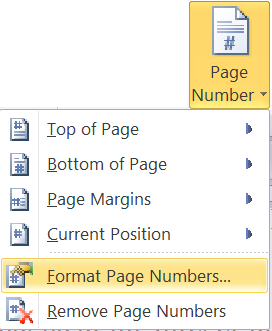
The approach we took looked for the string ], which would identify generic Bookmarks in his large document, subsequently numbering them in a sequence, creating Bookmark BM_1, BM_2, etc.

There was some setup involved – and this is important – LANCE_S_P wanted to leverage some type of indicator in his Word document, that VBA could find, in order to automate the creation of bookmarks. Progressing from that, to another related solution, where LANCE_S_P had the job of updating a massive Word document with many data-points and charts requiring periodic update, I wrote a simple utility that would automatically generate bookmark positions (see: http:/Q_27114358.htm). This was a big win for me, because up to this point, Word had been a 4-letter word.

#How to auto fill text form fields in word 2010 update
In that solution, we created the bookmarks, manually, and leveraged Excel VBA to automate the data update process, up to and including automatically pasting an Excel chart into the Word document. This was my first attempt at this, with LANCE_S_P having a database of data and needing to automate the population of a Word document. Not only do you need to identify where each bookmark goes, but you have to select a text string and use Word menus to create each bookmark, one at a time (there’s some similarity to creating a named range in Excel). Now, that’s a fairly tedious process, in and of itself. In past solutions, however (and indeed, most published tips/blogs on the subject that I’ve found), the user was required to create specific bookmarks in Word, manually. Option #3 is just a more structured (and perhaps maintainable) approach to #1, leveraging Word bookmarks to quickly identify where the Word ranges are that require update from Excel.Īs I had already successfully completed a couple solutions in this arena, I decided to leverage #3 via the use of Bookmarks for this article. Leverage the use of Word Bookmarks (very common approach, with many tips in the public domain), e.g., straight-forward example: See VBADUD’s BlogSpot, and is much more sophisticated, but it looks like a very structured approach.

Link specific fields in Word directly to Excel: ģ. Write a specialized application to find certain text strings in Word for replacement from Excel data.Ģ. Once the template design is complete, the act of opening the template causes Word to create a new document (not just open the template, itself), thus the act of saving the document after Excel data update will not invalidate the original template, itself ready to generate that next form-letter, invoice, report, etc.īeyond basic mail merge, there are several ways to connect your Word template to Excel data:ġ. The Word template is a designed document that has fields (Bookmarks) which should be populated from the Excel template.

The basic setup works with two templates: 1) Word template and 2) Excel template (a workbook with a worksheet that has the data needing to be farmed to the Word template). However, if your Excel data is already relatively structured, and you have more than a few data-points that need populating from Excel to Word, then you should find these tools helpful. There’s a bit of setup involved – in re-designing your Word document/template, and in structuring your Excel data. This article focuses on a set of tools that can be used to configure Word and Excel to help you get more out of Office by more quickly and accurately updating Word documents with Excel data. In fact, we have less time these days, for analysis and real business thinking, because we have to do more and more administrative tasks to either get our jobs done, please the boss, or both. When we finally get the data side of the equation in order (generally, in Excel), we still have to tediously enter data in Word – sometimes reading off Excel and typing in Word, and sometimes copying and pasting. Sound familiar? I don’t know about you, but each of these demands sounds like they could be full-blown IT applications, and yet we’re stuck holding the bag, manually delivering these results, day in and day out. You have an impressive, massive Word document that is used as a template to report company performance, each month, and you have to pull together 50 Excel data-points and 5 charts, then update the Word document in key places, saving and distributing the document by email, within 24 hours of “business close” for the prior month.


 0 kommentar(er)
0 kommentar(er)
